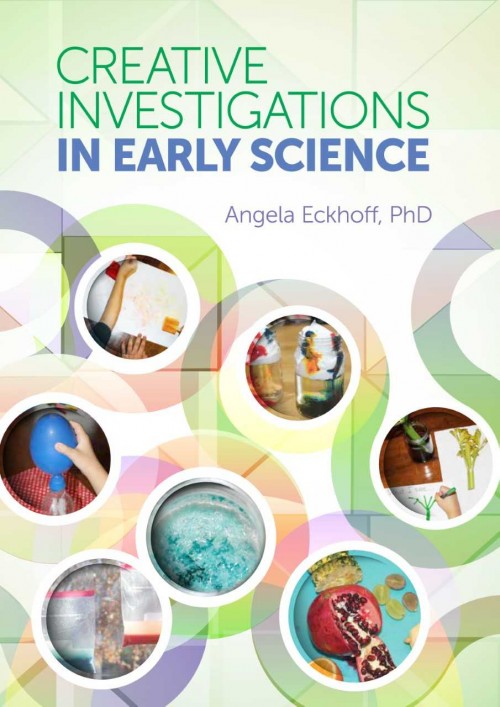All sorts of science experiments exist for children to participate in, and they love all of them science experiments they do have the chance to participate in! Their naturally curious minds keep them engaged during experiments, making it easy to introduce them to scientific concepts.
Creative Investigations in Early Science by Angela Eckhoff provides experiment ideas for educators and family members to conduct with children ages 3 to 6. Activities help children explore and learn about the world around them based on the 5E inquiry model of instruction (engage, explore, explain, extend/elaborate, and evaluate) and content recommendations from the Next Generation Science Standards (NGSS).
Check out this sample activity pulled from Creative Investigations in Early Science! Children are sure to love this activity, and children are sure to love the rest of the activities the book holds!
Balloon Blow-up
Topic
Combining certain substances can cause changes that can be observed. Sometimes these changes are reversible, and sometimes they are not.
Objective
Children will participate in measuring and mixing substances and observing the changes that happen.
Creativity Skills
- Exploration
- Documentation
- Communication/collaboration
- Opportunities for unique problem solving
Objective
Children will participate in measuring and mixing substances and observing the changes that happen.
Materials
- Balloon (1 per trial)
- Small bottle (cleaned 16-ounce soda bottle)
- Small funnel (if you don't have one, you can make one out of heavy paper for this experiment)
- Baking soda (2 tablespoons per trial)
- Vinegar (4 ounces per trial)
- Dropper/pipettes (optional)
- Paint (optional)
Overview
Invite the students to do this experiment with you, with one pair of students at a time. This is a fast-moving experiment with several precise steps.
Activity Steps
- Ask the students if they’ve ever blown up a balloon or seen someone blow up a balloon. Ask them what makes the balloon expand. Let them know that today they will help blow up a balloon but they won't be blowing air from their mouths into the balloon. They will be mixing vinegar and baking soda to see if they can blow up the balloon.
- Ask them to think about what will happen when baking soda and vinegar come in contact that may help inflate the balloon.
- Using the funnel, add the baking soda to each balloon (two people may be needed for this: one person to hold the balloon open and the other person to put the baking soda inside of the balloon.
- Pour the vinegar into the bottle using the funnel.
- Carefully fit the balloon over the bottle opening, taking care not to drop the baking soda into the vinegar yet.
- Once the balloon is fit tightly on the nozzle, hold up the balloon and allow the baking soda to fall into the vinegar.
- Observe the chemical reaction and effect on the balloon.
- Ask the children to think about what is produced that is blowing up the balloon. Introduce them to the term gas, and repeat the experiment to reinforce their ideas and observations. A great follow-up discussion question is to invite them to think about why the balloon eventually stops blowing up. Draw their attention to the liquid at the bottom—do they still see fizzing, or has that stopped?
Documentation
Your informal observations of the children's actions during the game will help you understand their thinking about gases.
Extension Lesson
This lesson can be expanded by exploring other fizzing experiments. For the Fizzing Colors experiment, you can add small amounts of food coloring to the baking soda and mix until combined. Using dropper/pipettes, invite the children to add vinegar to the baking-soda mixture. The children can paint with the mixture once the colors are created and the fizzing has stopped.
